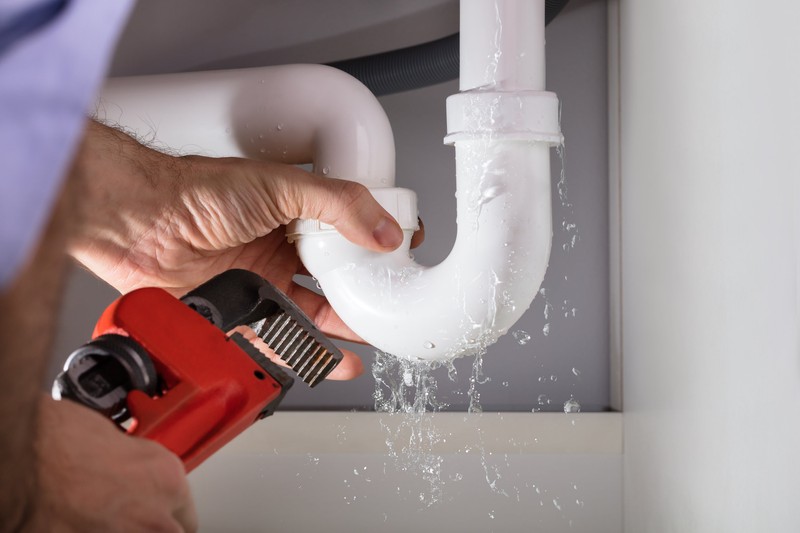
What Causes Pipe Leaks in Homes?
When you find a leak in your home, quick action saves water and stress. The usual culprits behind these drips include worn seals on appliances or clogged pipes that might overflow or break. As rubber sealing ages, it can crack, often seen as condensation or small puddles near machines like dishwashers.
If left unchecked, what starts as minor may grow into major repair needs. Spotting these signs on time means calling a skilled plumber to fix the issue before damage spreads through your house.
Common Culprits of Home Pipe Leaks
Broken seals in your home can cause leaks. Over time, as appliances like dishwashers age, the rubber that keeps water outwears or breaks. Then you see wet spots near these machines.
Clogged lines are another troublemaker. When things build up, and block pipes, pressure rises behind the clog until it’s too much—this might crack a pipe open! To stop clogs from starting, put hair traps in drains, and don’t pour bad stuff down them.
Say goodbye to rust-free days if you live in an older place with old pipes. Those metal tubes could let water slip through soon due to corrosion if they’re around 20 years old for steel or even after decades for brass types. That’s asking for leakage woes right off the bat when building new homes, and pipes need fitting so water flows uphill where necessary!
Finally, joints. Think of elbows on a tube connecting straights: They twist paths of moving water but also give way easier under stress than other parts. Catch these issues early with help from pros like plumbers who know their trade well; it helps keep your house dry and sound!
Understanding Corrosion and Leak Formation
Corrosion in your home’s pipes is a silent problem. It stems from basic chemical reactions within the metal, often due to water quality or the old age of plumbing fixtures. Over time, this wears down pipes, leading them to leak.
Rust can take its toll, too; older steel lines may corrode and need a pro for repair or replacement. Don’t wait, as it worsens quickly. PVC options resist rusting well, though, and that’s good news! However, with cracked or aging joints deep in walls, your potential leaks are hidden from view until damage surfaces; it’s crucial to act fast by calling professionals who handle such issues adeptly.
Preventative Measures for Water Pipe Longevity
To keep your pipes in shape:
- Watch their pressure.
- Make sure it stays safe.
- Keep it below 80 psi to avoid strain.
- In cold spots, wrap them up; this keeps them from cracking when temps drop and water freezes.
Also, don’t let clogs form from grease or hair; these block flow and push pipes too hard. For old metal pipes prone to rusting, check often for damp signs that point out leaks early on. Don’t flush things that can jam the works; a strainer helps here.
Always call a pro for help with regular checks; they can quickly fix small problems before they become big ones.
Pipe leaks in homes often stem from age-related wear. Over time, pipes corrode or get small cracks. Cold spells can freeze water inside, leading to pipe bursts as the ice expands.
Clogs also build pressure and strain on your plumbing system, which might cause a leak later. Homes with hard water may experience faster deterioration due to mineral buildup that weakens pipes from within; meanwhile, high water pressure could push against pipe walls too forcefully, which isn’t ideal for keeping things watertight.


